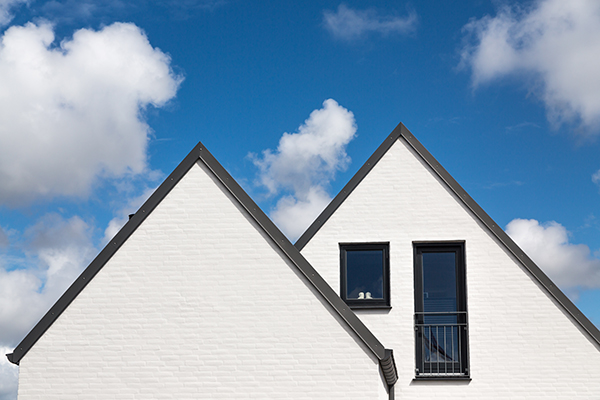Roof Inspiration: Why Gable Roofs Are So Popular and What to Know About Gable Roof Repair
Author: Dan Stout | October 30, 2024
As a roofer, your first thought when you look at a gable roof repair or installation probably boils down to: "How effectively does that shed water?" or "How complicated will that be to repair?" And that makes perfect sense, from a roofer's point of view.

But with homeowners, a roof isn't always about logic. Sometimes it's about making a choice that feels right. In today's real estate market, homeowners and buyers are making decisions driven by a design sense or emotional feel, rather than curb appeal and dollars and cents. Whether working on a new build or servicing an existing roof, it pays to understand how homeowners view their home … and their roof installations and repairs.
Here's a look at one of the most popular roofing designs in America, the venerable gable roof.
What Is a Gable Roof?
Gable roofs are often described as looking like a child's drawing of a home. This classic look has two sloping sides that join a ridge at the roof's peak. Both roof planes terminate at a gable on either end of the roof. (When talking to homeowners, explain that the "gable" is the side of the home where siding continues up to the peak, rather than the roof itself.)
From a structural viewpoint, gable rafters typically have a plumb cut at the ridge and a tail cut at the eaves (with a birdsmouth at the wall header). The gable ends will need additional studs to support any cladding.
In practice, most homes aren't as simple as those children's drawings. Modern homes typically have a combination of roof styles. Dormers are often gabled, for example, even when the rest of the roof is not. It's important to take the entirety of the roofline into account before a gable roof repair or installation.
What Styles Look Great with Gable Roofs?
Gabled roofs look great on a variety of home styles, including:
- Cape Cod: This classic style typically features steeply pitched side gables. They often have dormers (also gabled) that allow for more second-floor living space. Classic Cape Cods are sometimes called "one and a half" stories. Modern Cape Cod homes are larger than older homes and may have more complex rooflines.
- Georgian: Georgian homes are typically larger than Cape Cods and may have a gabled or hipped roof. Dormers will typically be gabled, giving visual variety to the symmetrical and elegant Georgian layout.
- Colonial: Colonials are loosely related to Georgian design, and their classic lines benefit from the variety and clean elegance of gable roofs.
- Ranch: A ranch-style roof can be dramatically spruced up with the introduction of gables. The raised ridge allows for an attic crawlspace (adding valuable storage) and more intriguing curb appeal. Midcentury-style ranches often have a very low-slope gable roof.
- Farmhouse-style: These homes benefit from simple lines and a rustic vibe. A gable roof on a farmhouse layout can bring a sense of country style.
- A-frame: Snow-shedding A-frame homes have very long, steep front gables.
What Materials Work Best with Gables?
Because gable roofs are popular across the U.S., you'll likely run into a customer needing gable roof repair. Knowing what materials to use is key.
Gable roofs provide great resistance to snow and rain, but they're prone to damage from uplift in high winds. ASTM D7158 Class H shingles can hold strong against wind speeds up to 150 mph. If you have any doubt about the wind risk a given home will face, use wind-resistant materials and best practices when installing or servicing an existing gable roof.
Luckily, the vast majority of roofing materials designed for a pitched roof will work on gable roofing. Stay away from sheet products such as EPDM, but materials such as asphalt shingles, cedar and slate are all great choices for a gable roof.
Selling a Homeowner on Gable Roofs
It's usually not difficult to sell a homeowner on a gable roof. There's a reason so many people draw those kindergarten images of homes — for many people, gable roofs are baked into their subconscious as the idealized home shape.
If you have a homeowner looking to convert an existing roof to a gable, walk them through the full ramifications of doing so. Explain the knock-on effects of changing a roof slope, such as weight distribution, watershed direction and wind resistance. It can almost always be done, but being clear about all the ramifications will greatly limit any misunderstandings and unneeded warranty callbacks.